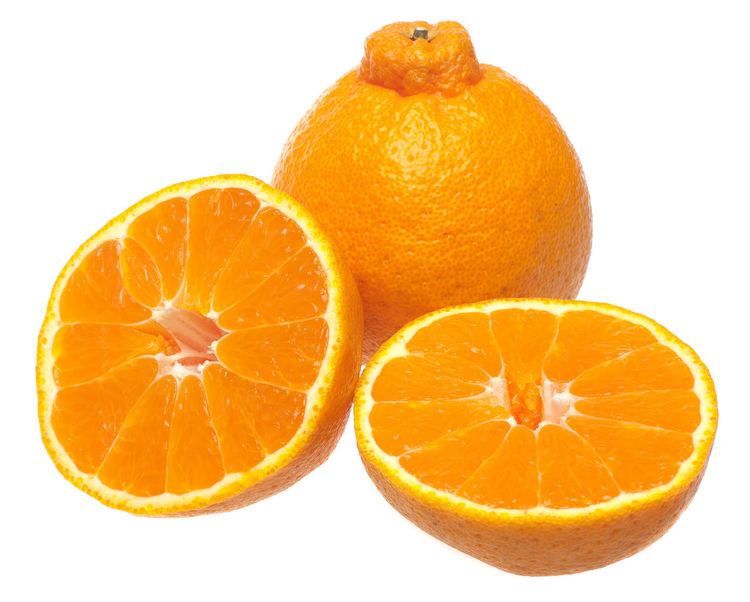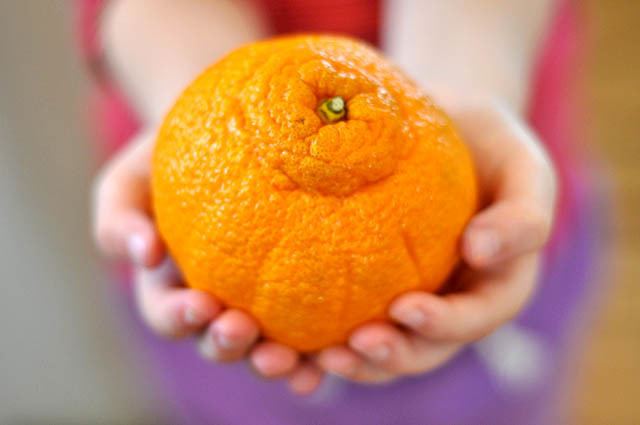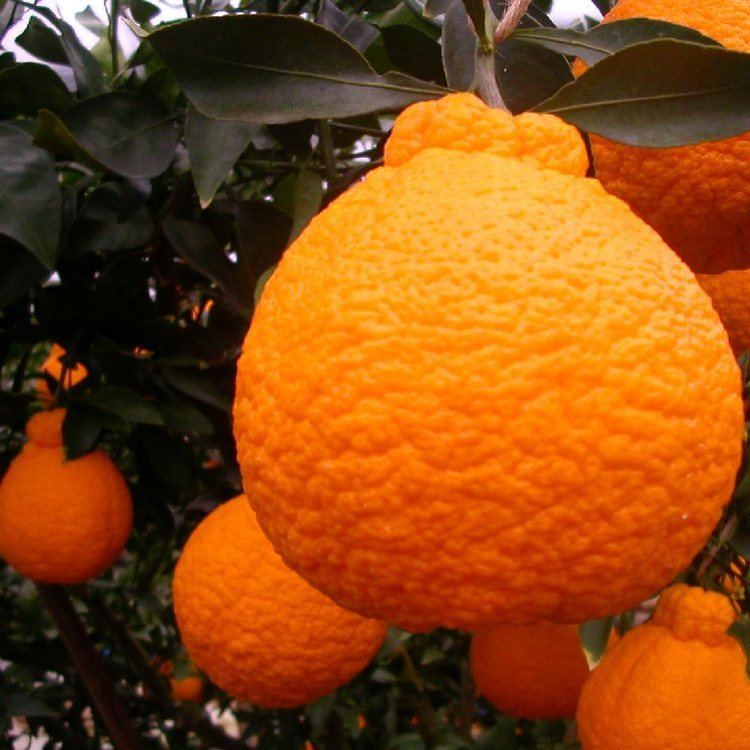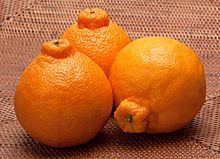Higher classification Tangerine | Rank Cultivar | |
 | ||
Scientific name Citrus reticulata 'Shiranui' Similar Satsuma Mandarin, Ponkan, Setoka, Iyokan, Hassaku orange | ||
Budidaya buah impor jeruk dekopon di bandung net12
Dekopon (デコポン) is a seedless and sweet variety of mandarin orange.
Contents
- Budidaya buah impor jeruk dekopon di bandung net12
- Tangerina dekopon
- Names
- Cultivation
- Outside Japan
- Others
- References
It is a hybrid between Kiyomi and ponkan (Nakano no.3), developed in Japan in 1972.
Originally a brand name, 'Dekopon' has become a genericized trademark and it is used to refer to all brands of the fruit; the generic name is shiranuhi or shiranui (不知火). Dekopon is distinctive due to its sweet taste, large size and the large protruding bump on the top of the fruit.

Tangerina dekopon
Names

The name is most likely a portmanteau between the word deko (凸, デコ; meaning convex) as a reference to its bump, and the pon in ponkan (ポンカン; one of the fruits that it is derived from) to create 'dekopon' (デコポン).

There were many market names for 'dekopon' during the time 'dekopon' was a trademark of the product from Kumamoto. For instance, himepon was the market name for the fruits originating from Ehime prefecture. The ones grown in Hiroshima prefecture were marketed as hiropon. However, after an agreement whereby anyone can use the name 'dekopon' if they pay a fee and meet certain quality standards, the name "dekopon" is used for products from anywhere in Japan.

'Dekopon' does not have an agricultural variety registration number (Nōrin Bangō) because of its bump, which at the time of its development was considered to be unsightly, and failure to reduce acidity in the fruit.
Cultivation

The fruits are usually grown in large greenhouses to keep them at a constant temperature, and are harvested from December to February (winter in Japan), while in the case of garden farming, they are harvested from March to April. After harvesting, dekopon are usually left for a period of 20–40 days so that the levels of citric acid in the fruit lower while the sugar levels increase, to make a more appealing taste for the market. Only products with sugar level above 13°Bx and citric acid below 1.0% can be sold with the name dekopon.
Outside Japan
In Brazil, 'dekopon' is marketed under the brand name of Kinsei which derived from the Japanese word for Venus. Brazilian farmers have succeeded in adapting the variety to tropical to temperate climate in the highlands of São Paulo state. The work is done by Unkichi Taniwaki, a farmer of Japanese origin. Kinsei is easily harvested from May to September. In the high season for kinsei, each fruit costs around 0.50 USD at the Brazilian street market and supermarkets.
In South Korea, 'dekopon' is called hallabong (한라봉) named after Hallasan the mountain located in Jeju-do, where it is primarily grown.
The citrus budwood was imported into the United States in 1998 by a California citrus grower, Brad Stark Jr. The rights to the sterilized budwood were purchased in 2005 by the Griffith family, owners of the nursery TreeSource and packing facility Suntreat. The dekopon was released as a commercial product in the US under the name "Sumo" in early 2011.
Others
'Dekopon' have become so popular in Japan that the chewing candy brand giant Hi-Chew (ハイチュウ) has released a limited-edition 'dekopon' flavor.
In commemoration of the 15th anniversary of the first shipment of 'dekopon', Japan Fruit Growers Cooperative Association designated March 1 "Dekopon day" in 2006.
